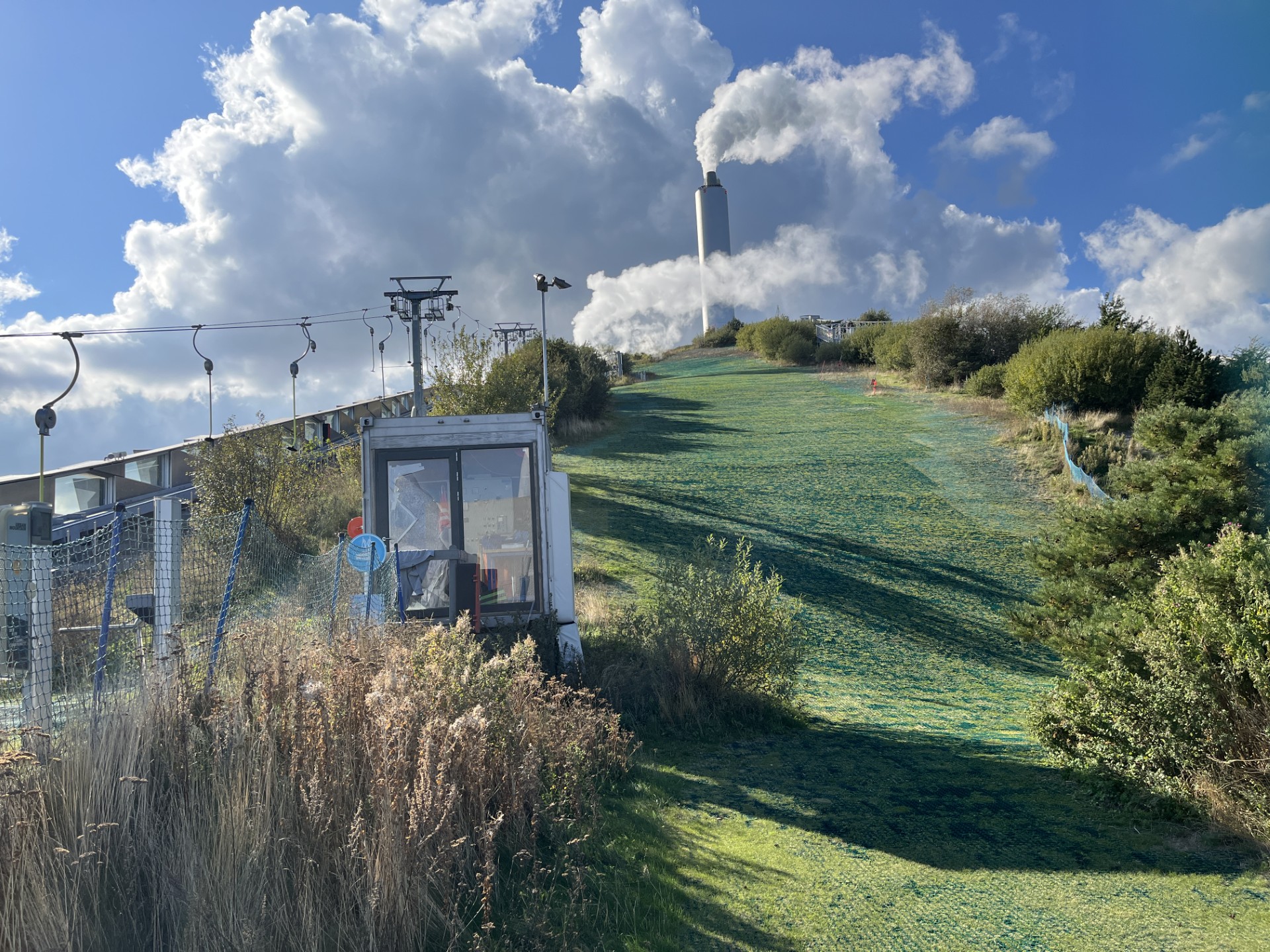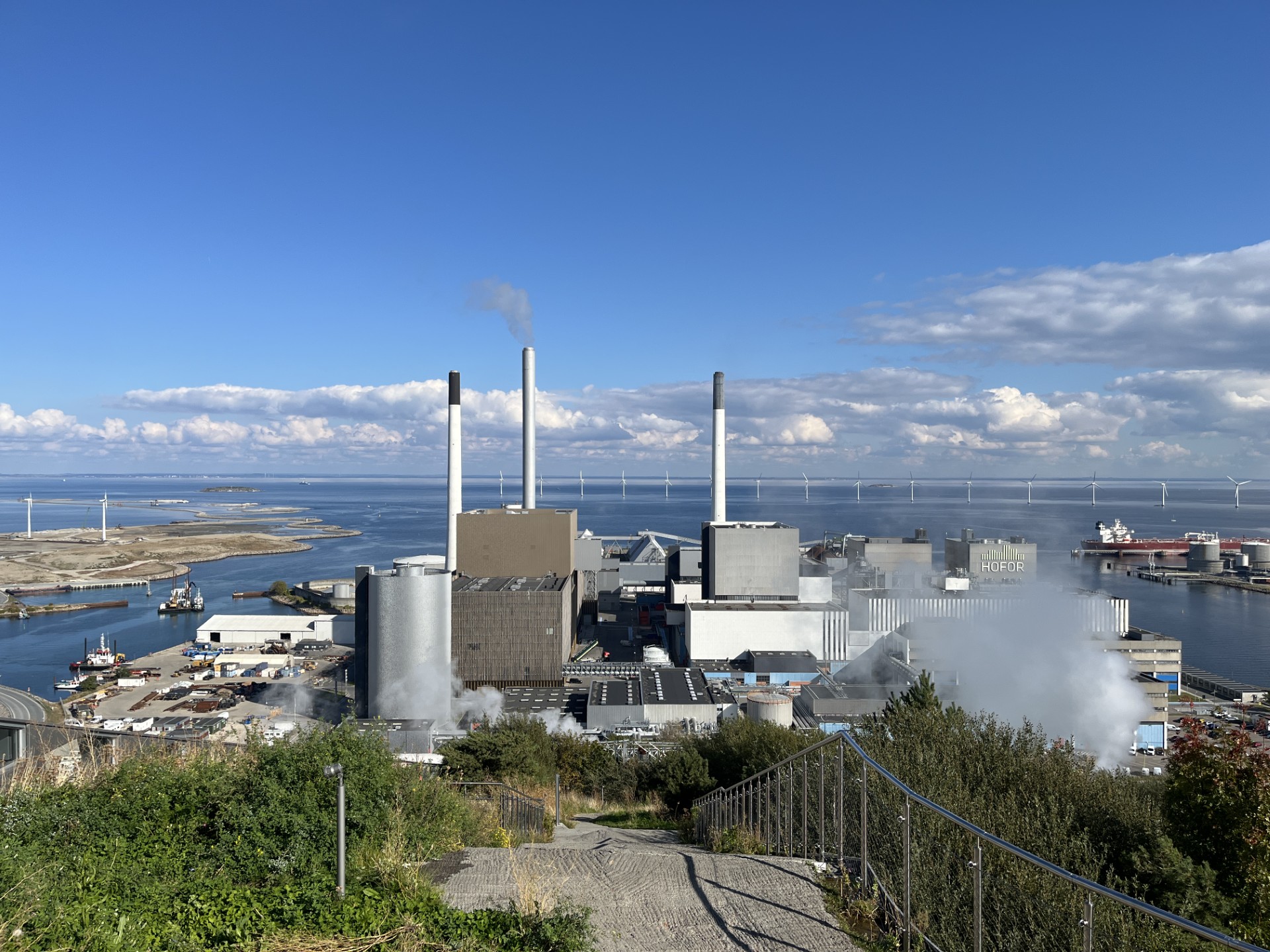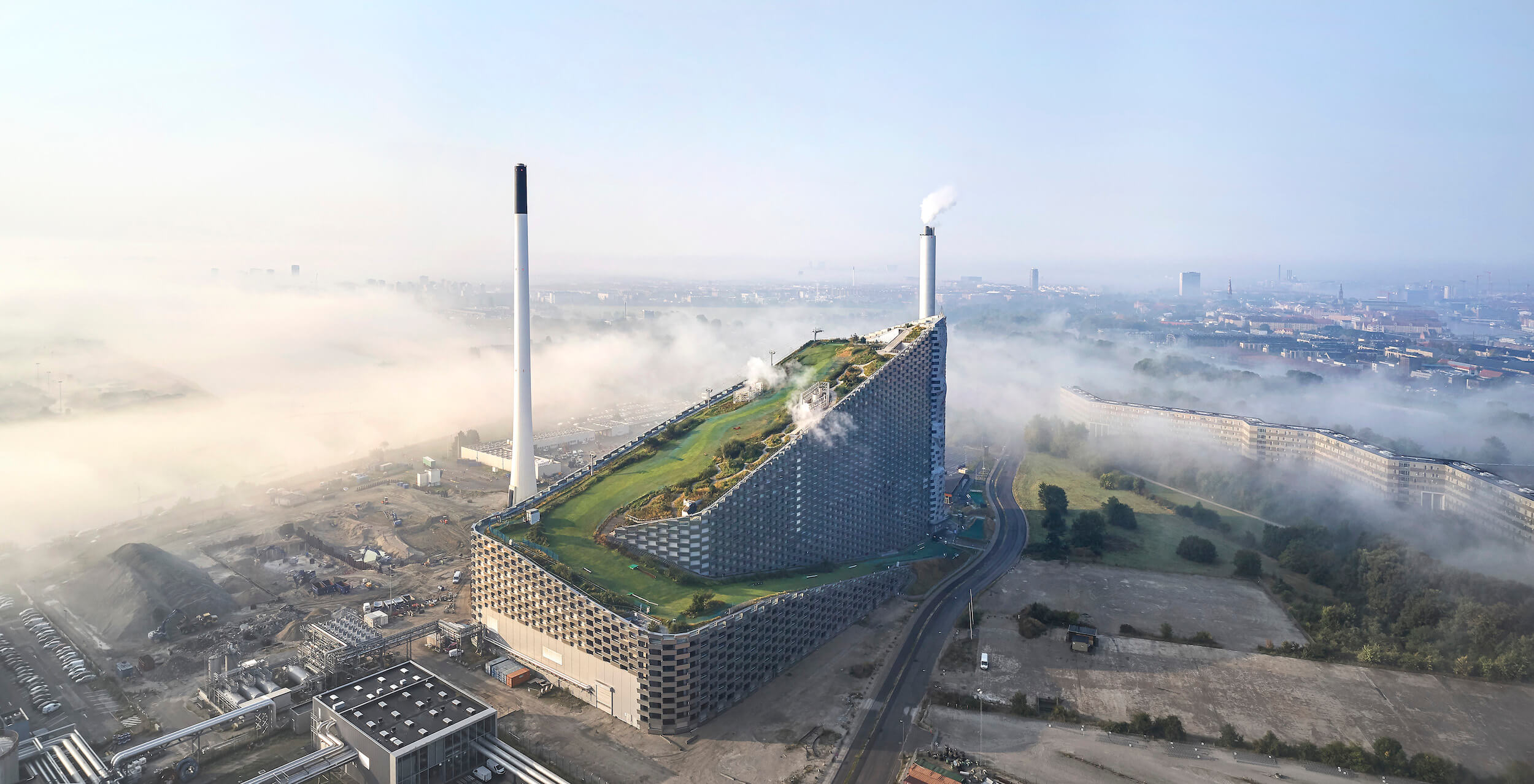Powering a City, the Green Way
At its core, CopenHill is a state-of-the-art waste-to-energy plant, designed by the visionary Bjarke Ingels Group (BIG). Spanning an impressive 41,000 m², the facility is capable of processing up to 440,000 tons of non-recyclable waste annually. "What happens to all this trash?", i hear you ask. It’s transformed into electricity for roughly 30,000 households and provides district heating for 150,000 homes, effectively turning the city’s unwanted materials into essential resources.
Equally impressive is the plant’s environmental performance. CopenHill is equipped with an advanced flue gas cleaning system that captures 99.5% of harmful particulates, including sulfur and nitrogen oxides, before they reach the atmosphere. The result: a facility that is not just functional but among the cleanest waste-to-energy plants in the world, setting a benchmark for sustainable industrial design.
An Urban Playground Like No Other
But what truly sets CopenHill apart is that it isn’t just a power plant - it’s a playground for the city. Rising above the industrial machinery is a sloped rooftop that defies convention. Here, visitors can find:
- A 450-meter ski slope, complete with eco-friendly Neveplast, allowing for skiing and snowboarding year-round without needing a single snowflake.
- An 85-meter climbing wall, one of the tallest of its kind, offering challenges for beginners and seasoned climbers alike.
- A 7,000 m² rooftop park, filled with 300 trees, 7,000 bushes, and carefully landscaped walking paths, creating a verdant escape high above the city streets.
For those seeking a more leisurely experience, the rooftop also features a bar, café, and 360° panoramic views of Copenhagen, combining urban sightseeing with a sense of environmental purpose. Hiking trails, cross-fit areas, and the city’s highest viewing plateau make it a year-round destination, appealing to locals, tourists, and adventure seekers alike.
Hedonistic Sustainability: Pleasure Meets Responsibility
CopenHill embodies BIG’s concept of “hedonistic sustainability” - the idea that environmental responsibility doesn’t need to be boring or austere. By merging renewable energy production with leisure and recreation, the project shows that sustainability can be fun, immersive, and aspirational. It’s a bold statement: taking something as mundane (and often problematic) as trash and turning it into a source of joy, exercise, and community engagement.
This philosophy aligns perfectly with Copenhagen’s wider goal of becoming the world’s first carbon-neutral city. CopenHill demonstrates that urban infrastructure doesn’t have to be hidden away or utilitarian - it can be celebrated, explored, and experienced. It proves that eco-consciousness can coexist with thrill-seeking, socializing, and cultural enrichment.
A Model for Cities Worldwide
CopenHill is more than a local attraction - it’s a global symbol of what the cities of tomorrow could look like. Its combination of cutting-edge clean energy technology, recreational innovation, and architectural audacity challenges traditional notions of industrial spaces. By blurring the line between utility and experience, it invites urban planners worldwide to rethink how cities can integrate sustainability into daily life in visually inspiring and socially engaging ways.
Whether you’re a Copenhagen local looking to ski at sunset, a climber chasing your next vertical thrill, or a sustainability enthusiast fascinated by innovative energy solutions, CopenHill has something to offer. It’s a place where waste transforms into electricity, recreation, and awe-inspiring city views, reminding us that the future of urban life can be both responsible and thrilling.

Photo Copyright: Michael Brecht & cover picture: archpaper.com
Secure your MOTION MAG copy online now: EDITION SIX.





